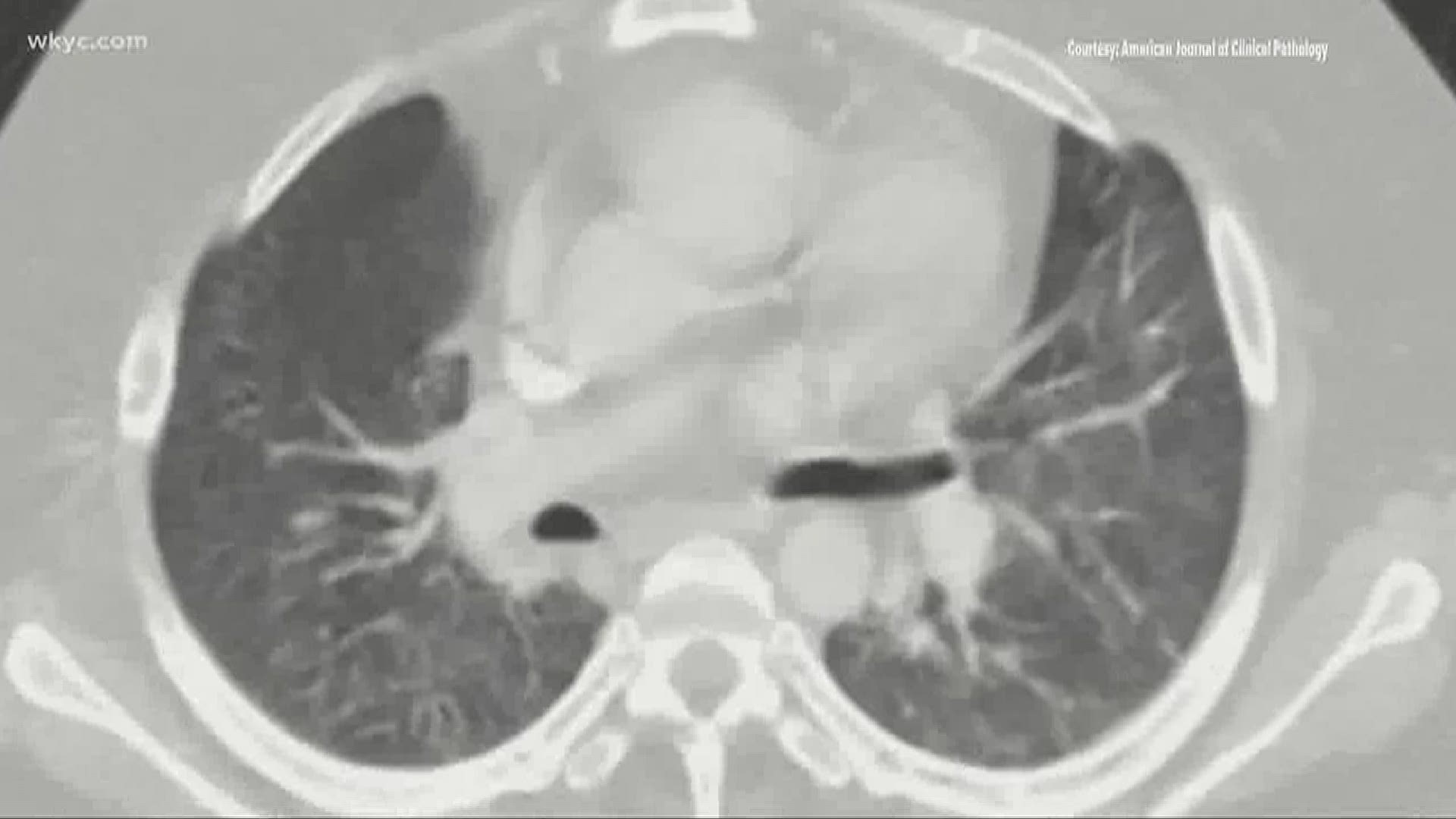CLEVELAND — What exactly does coronavirus do to the lungs, and can we learn something about the virus from those who have died from it?
“I look, personally just day in and day out, I just look at lung slides. That’s my expertise,” says Dr. Sanjay Mukhopadhyay.
He’s the Director of Pulmonary Pathology at the Cleveland Clinic and the person a team of doctors in Oklahoma called upon when they began the United States’ first peer-reviewed study looking at autopsies of patients with COVID-19.
“They had gotten a chest x-ray after the death of the patient,” Mukhopadhyay told us. “So, that actually gives us a very valuable thing to look at that we hadn’t had before. So we went several layers deeper than an ordinary doctor would do with the tools that are available to them.”
The study, although small, looked at two different patients and did provide some helpful information. The first thing they found was damage to the lung walls, which explains why patients have trouble breathing and, in some cases, the need for a ventilator.
“There’s a thing called Diffuse Alveolar Damage, or D-A-D for short,” Mukhopadhyay explained. “If you look at the alveolar, or the air sac of the lung, those little balloons in the lung where the gas exchange occurs, you need those walls to be super thin so that oxygen can go from the air into the wall where the blood vessels are. What happens in COVID is those walls become thicker and thicker and thicker because of damage from the virus. Those thick walls prevent gas exchange from going on.”
They also found no evidence of inflammation of the heart muscle and didn’t find mucus blocking the windpipe or airwaves, both, at times, thought to be symptoms or side effects of the Coronavirus.
“All of those things are explainable from the pathologies,” Mukhopadhyay said.
Although the research didn’t come up with a cure, it’s all part of the bigger puzzle of helping the world to understand this new virus and helping to figure out the best way to treat and ultimately vaccinate against it.
“I think the more and more we have access to these tissues, the more we’ll be able to help research in the future,” Mukhopadhyay said.
RELATED: Cleveland Clinic CEO among health executives at White House to roll out ventilator loan program

